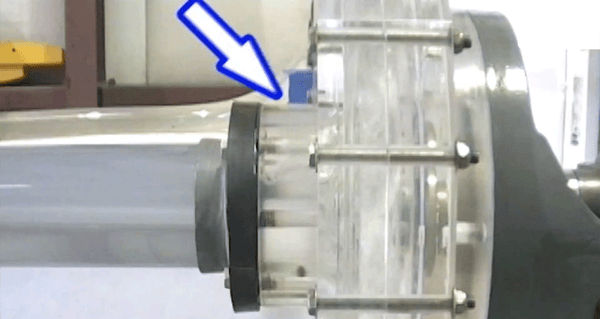
 Every pumping operation comes with a unique set of challenges. Some of these challenges emerge as a result of the techniques or tools used to extract the product. For example, some operators add chemical agents to their slurry that froth and separate the desired ore from the liquid. Froth can create air bubbles that build up and impede flow in a phenomenon called airlock. Fortunately, there is a solution. Here is a look at how airlock happens, and how to prevent it.
Every pumping operation comes with a unique set of challenges. Some of these challenges emerge as a result of the techniques or tools used to extract the product. For example, some operators add chemical agents to their slurry that froth and separate the desired ore from the liquid. Froth can create air bubbles that build up and impede flow in a phenomenon called airlock. Fortunately, there is a solution. Here is a look at how airlock happens, and how to prevent it.
How does airlock happen?
For most slurry pumps, the underlying cause of airlock is the pressure difference between the liquid and the pump entrance. The pump expels liquid at a high pressure; however, the area of the impeller eye maintains a lower pressure. This difference causes the air bubbles within the froth to build up and “lock” near the pump entrance.
Airlock normally reduces flow and production. In the most severe cases, it can halt production entirely. Despite what you may expect, it only takes a small pocket of air to have a big impact. Many pump operators fail to recognize this issue until they have lost substantial time and money.
Visualizing the problem
What makes airlock especially problematic for operators is that it is difficult to understand how it happens — as well as how little air it takes to cause a problem — without witnessing it firsthand. To address this confusion, we created a video that illustrates how air can build up in the pump and impede flow.
In the video, our experts demonstrate the reduction in flow when air becomes trapped near the entrance. In a pipe measuring 1.5 meters long, it only takes a 50 mm air pocket to significantly disrupt production!
The GIW HVF pump eliminates airlock in froth applications
Although pump operators have options for resolving airlock — such as manually popping bubbles, modifying their piping systems, or adjusting their slurry’s composition — the best solution is to use a pump that addresses the cause head-on. Fortunately, we developed one: the GIW High-Volume Froth (HVF) pump.
This pump features a specially designed impeller with built-in holes that allow air to escape the slurry through a port into a separate deaeration chamber. Any liquid that passes through this port returns to the process tank.
The HVF pump’s unique design has enabled operators to mitigate the consequences of airlock and maximize output. This pump has even helped some customers exceed their production expectations!
Pumping with froth can help you achieve great results, but if you are not careful, airlock can deflate your productivity. That’s why it is important that you understand the causes of airlock and the ways to alleviate it. With the help of a visual aid, hands-on training equipment, and a dedicated partner like GIW, you can keep pumping at maximum capacity!
